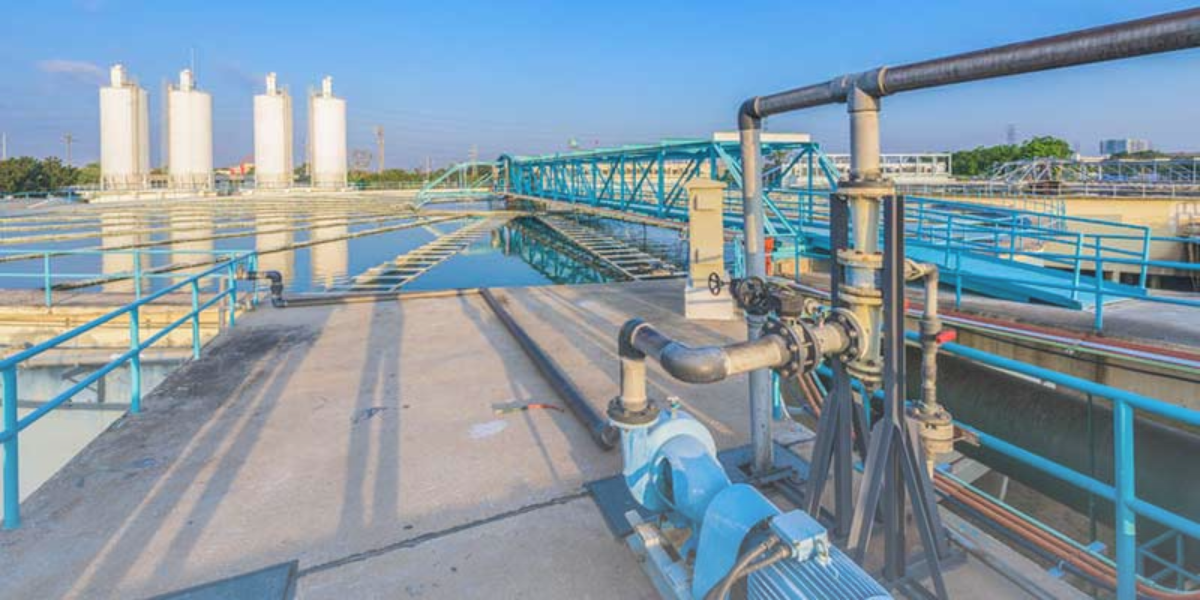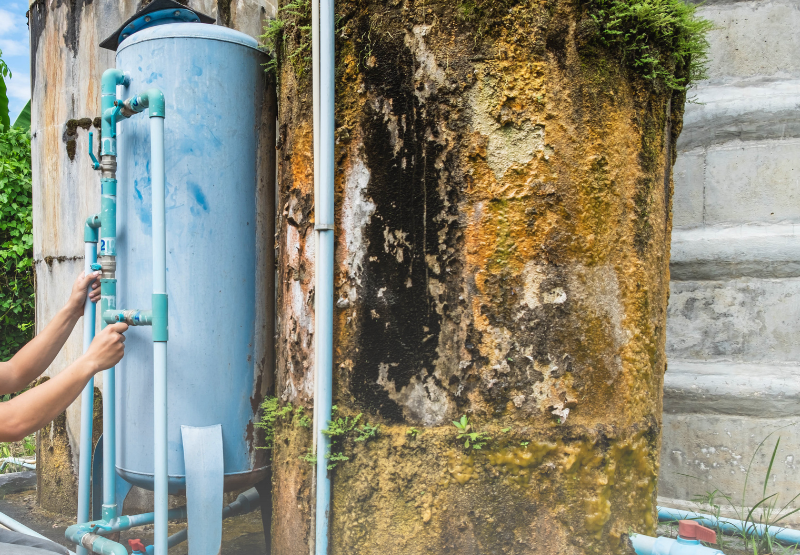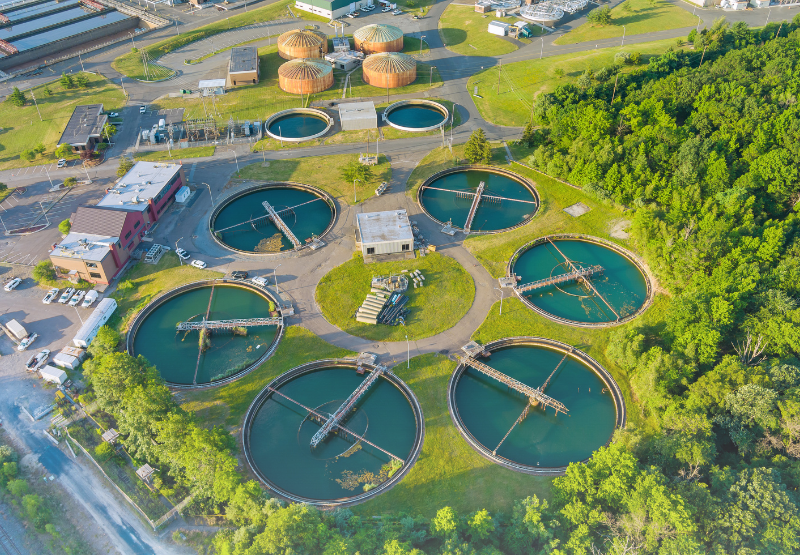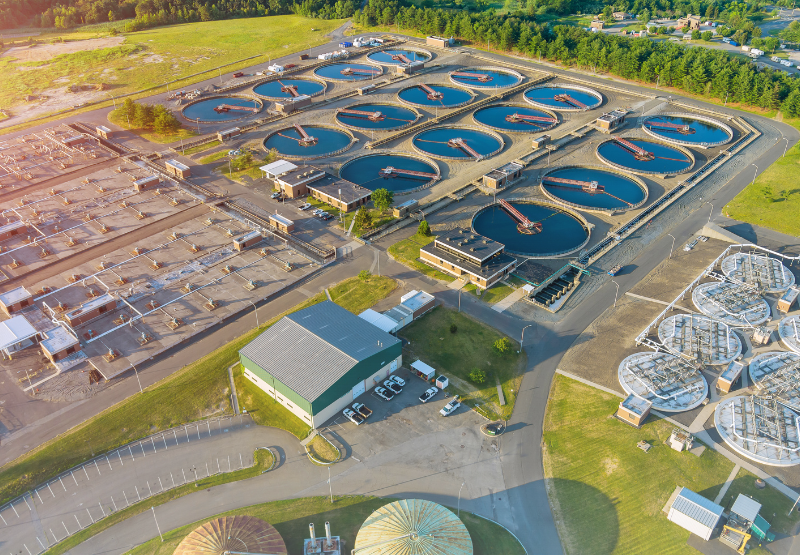Effective Water Management Strategies for Commercial Buildings
Key Takeaways
Water management in commercial buildings offers financial savings, operational resilience, and ecological advantages.
An approach identifies quick wins and sustains continuous efficiency gains through regular audits.
Technology-driven strategies use real-time metrics and automation to pinpoint inefficiencies and support faster responses.
Staff training, policy alignment, and incremental upgrades create a framework that keeps budgets stable over time.
Measuring the results ensures that improvements remain on track and supports a transparent view of resource use.
Careful planning in the water use sector reduces operational expenses, maintains occupant comfort, and meets sustainability benchmarks. Clear strategies deliver faster returns on investment and highlight an organization’s dedication to resource stewardship. Water shortages strain budgets and disrupt operations, which is why selecting effective solutions can protect business continuity.
Many organizations face uncertainty around shifting water regulations and the expense of outdated systems. A framework gives clarity on short-term tasks while ensuring cost-effective expansion in the future. Practical methods help avoid unplanned downtime and water waste, ultimately creating a more efficient facility. This discussion explains how commercial buildings can maximize water usage and remain prepared for fluctuating market highs.
Water Management in Commercial Buildings
Water management in commercial buildings focuses on optimizing supply, usage, and conservation strategies for large-scale facilities. Significant amounts of water go into daily operations, from restroom facilities to cooling systems. Leaders in this field prioritize continuous assessments to reveal inefficiencies and pinpoint areas for better allocation. Consistent auditing prevents costly leaks and sets a foundation for stronger resilience.
These methods incorporate regulatory compliance, occupant comfort, and potential cost savings into a single framework. A robust plan not only cuts monthly bills but also aligns with community expectations around responsible resource use. Many organizations adopt digital monitoring tools to track performance metrics and schedule system tune-ups. Streamlined policies and modern hardware create a cohesive approach that meets both financial and ecological requirements.
"Leaders in this field prioritize continuous assessments to reveal inefficiencies and pinpoint areas for better allocation."
Benefits of Effective Water Management in Commercial Buildings
Organizations that invest in water management in commercial buildings unlock a range of positive outcomes, both immediate and long-term. Careful planning can extend equipment lifespans, reduce operating costs, and maintain optimal conditions for occupants. Many properties also notice improvements in brand reputation as stakeholders appreciate responsible practices.
Reduced water bills. Lower monthly costs free up capital for other building improvements and ensure a stable budget year-round.
Prolonged asset lifespan. Well-maintained plumbing and cooling systems experience fewer breakdowns and extend the useful life of valuable infrastructure.
Stronger regulatory compliance. Staying ahead of local or national guidelines helps avoid fines and positions the property as a proactive industry leader.
Positive occupant perception. Tenants, customers, and employees appreciate facilities that prioritize resource conservation and maintain high standards.
Healthier indoor conditions. Minimizing moisture-related issues, such as mould, improves indoor air quality and protects occupant well-being.
Enhanced sustainability credentials. Property owners can attract investors who value commercial water management solutions that balance financial performance with ecological stewardship.
Each outcome fosters both immediate payoffs and ongoing benefits that support larger organizational objectives. The right measures help avoid disruptions, protect essential infrastructure, and elevate overall operational efficiency. Streamlined resource usage also positions a facility as a steward of sustainable growth. This creates a stable platform for future advancements in commercial water management.
Implementing Commercial Water Management Solutions for Sustainability
Local guidelines often serve as a blueprint for resource usage, although each facility has unique operational requirements. Clear goals begin with a thorough review of existing consumption rates, followed by milestones for improvement. Standardizing procedures supports accountability and helps staff coordinate maintenance schedules and emergency responses. Detailed metrics guide every step, ensuring that commercial water management solutions align seamlessly with day-to-day operations.
System overhauls gain momentum when leadership understands both the upfront costs and the potential returns. Replacing outdated fixtures, optimizing cooling towers, and installing efficient pumps lay the groundwork for a more adaptive infrastructure. Ongoing audits confirm that systems continue functioning at peak capacity and help staff identify small issues before they turn into expensive problems. Transparent monitoring practices maintain credibility among stakeholders and reinforce an organization's commitment to responsible resource use.
Applying Technology for Advanced Water Management in Commercial Buildings
Digital controllers and sensors deliver precision by regulating flow rates based on real-time data. These tools respond to sudden shifts in usage, ensuring resources are allocated effectively without manual oversight. Remote access empowers facility teams to make quick adjustments and manage unexpected events from anywhere. Alerts and automated responses minimize downtime and support consistent performance.
Advanced analytics platforms interpret usage data, detect anomalies, and suggest preventative actions. Forecasting tools outline patterns that guide resource allocation and reveal areas of inefficiency. Predictive algorithms help teams schedule inspections at intervals that maximize efficiency and reduce the risk of equipment breakdowns. Accurate data also supports budget planning and guarantees that investments are well-timed for optimal returns in commercial water management.
Common Challenges in Commercial Water Management
Even thorough plans can encounter unexpected obstacles that disrupt day-to-day efficiency. Water quality issues, undersized storage, and aging pipes often require specialized interventions that add complexity. Rapid population growth in certain areas can also strain existing supply systems and push costs upward.
Unreliable infrastructure. Failing fixtures or poorly maintained distribution networks lead to leaks, reduced pressure, and expensive repairs.
Limited real-time data. A lack of accurate usage metrics hinders proactive organizational planning and fosters wasteful practices.
Seasonal fluctuations. Heating and cooling shift throughout the year, which affects water requirements in unpredictable ways.
High upfront investment. Upgrading to newer systems can involve steep initial costs that deter businesses, even though long-term returns are significant.
Complex regulatory framework. Multiple levels of government oversight can complicate compliance, requiring careful tracking of shifting rules and guidelines.
These challenges often intersect, compounding the problem and making water efficiency more difficult to achieve. A targeted approach addresses each hurdle systematically, ensuring that available resources are put to maximum use. Property managers who anticipate these obstacles stand a better chance of safeguarding budgets and promoting resilience. Thoughtful planning and continuous adaptation reduce the likelihood of sudden disruptions and costly interventions.
Successful Commercial Water Management Strategies
Numerous tactics have proven effective across different facility types, from high-rise offices to industrial complexes. Each approach serves a distinct purpose yet contributes to the larger goal of sustainable resource allocation. Simple steps often lay the groundwork for more extensive initiatives in the future.
Rainwater collection. Capturing precipitation for non-potable uses like landscaping cuts reliance on municipal supplies.
Greywater reuse systems. Cleaning and reusing wastewater from sinks or showers helps lower overall consumption.
Efficient cooling towers. Monitoring temperature and water levels keeps recirculation processes stable, limiting waste.
Timely leak detection. Early identification of drips prevents long-term structural damage and curtails water loss.
Metering at key points. Sub-metering distinct areas or departments clarifies usage patterns and simplifies cost allocation.
Consistent execution of these methods forms the foundation of a reliable water management plan. Each strategy complements the others, creating a well-rounded approach for properties of varying sizes. Infrastructure investments become more predictable with the help of data-driven decisions at every stage. This coordination saves time, fosters cost savings, and reduces the chance of unexpected failures.
"Remote access empowers facility teams to make quick adjustments and manage unexpected events from anywhere."
Best Practices for Optimizing Water Management in Commercial Buildings
Staff often handle the daily tasks that influence water consumption, so proper training is pivotal. Clear procedures, quick reporting mechanisms, and incentives for conservation-minded actions encourage consistent adherence. Frequent reminders about checklists and usage targets keep everyone aligned with organizational priorities. These efforts create a supportive culture where ongoing efficiency gains are both recognized and rewarded.
Scheduled inspections minimize surprises and reveal signs of wear or leaks before they escalate. Professional evaluations verify that pressure levels remain within safe parameters, preventing unnecessary strain on pipes and valves. Minor repairs at the right intervals help facilities avoid major overhauls and maintain stable operating costs. Consistent reviews also build a record of improvements that supports transparent reporting and stronger stakeholder confidence in commercial water management solutions.
Measuring the Impact of Water Management Initiatives
Quantifiable results confirm that policies and upgrades deliver the intended outcomes. Usage reports compare current performance against historical baselines, offering clear insights into cost savings, lowered consumption, and better facility conditions. Reports also supply valuable context for budgetary planning and help validate the return on each investment. Metrics guide decisions about the next phase of improvements, especially when long-term reliability is a priority.
Organizations that adopt routine water performance assessments can reduce operational water consumption greatly. Tracking key indicators highlights where additional resources might make a significant difference. Leadership teams often share these results with stakeholders to secure buy-in for expansions or upgrades. A well-documented performance record cements credibility and sets the stage for ongoing enhancements.
Water management in commercial buildings shapes financial outcomes, occupant satisfaction, and ecological stewardship. Decision-makers gain an edge by adopting proven strategies, monitoring results, and adapting plans to shifting conditions. Methods such as real-time analytics, staff training, and targeted policy adjustments offer consistent returns. The capacity to reduce waste and protect resources stands out as a hallmark of well-planned facilities.
Long-term success relies on balancing technological adoption with practical planning and routine evaluations. Facilities that commit to this approach can mitigate risks while boosting operational efficiency. A comprehensive perspective, informed by data and aligned with regulatory requirements, leads to better risk management and robust financial performance. Meaningful efforts to conserve water benefit both businesses and the communities they serve, proving that every drop truly matters.
Revitalize your outdoor spaces with Smart Watering Systems, where innovation meets sustainability. We specialize in crafting intelligent irrigation and water management solutions tailored to your unique needs. Our methods conserve resources, enhance the beauty of your surroundings, and support healthier plant growth.
Common FAQ About Water Management Strategies for Commercial Buildings
-
Expense levels vary based on the size of your facility, the extent of existing infrastructure, and the specific systems you choose. Many organizations observe that lower monthly bills and extended equipment lifespans help offset these upfront investments.
-
Stronger oversight lowers waste, enhances resource distribution, and creates a more responsible operating model. A clear commitment to conservation also supports positive stakeholder perceptions and long-term budget stability.
-
Real-time metrics highlight hidden patterns, such as seasonal usage spikes or unanticipated leaks, giving decision-makers valuable insights. Customized analytics platforms support informed planning and guide adjustments that boost efficiency.
-
Regular audits, typically every quarter or semi-annually, identify small issues before they escalate into major problems. Consistent tracking provides the foundation for cost-effective improvements and helps maintain a high level of resource stewardship.
-
Retrofitting might present certain hurdles, but careful planning and phased adoption can smooth the process. Experts often recommend gradually replacing outdated fixtures and layering in digital monitoring for a balanced path to modernization.








